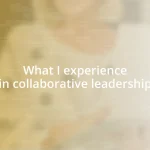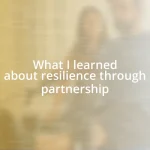Key takeaways:
- Effective collaboration is driven by clear communication, diversity and inclusion, and respect for all team members’ contributions.
- Building trust within a team requires vulnerability, consistency in follow-through, and fostering interpersonal connections beyond work tasks.
- Conflict resolution is enhanced through active listening, structured discussions, and a focus on problems rather than individuals, with success measured through both qualitative feedback and tangible outcomes.
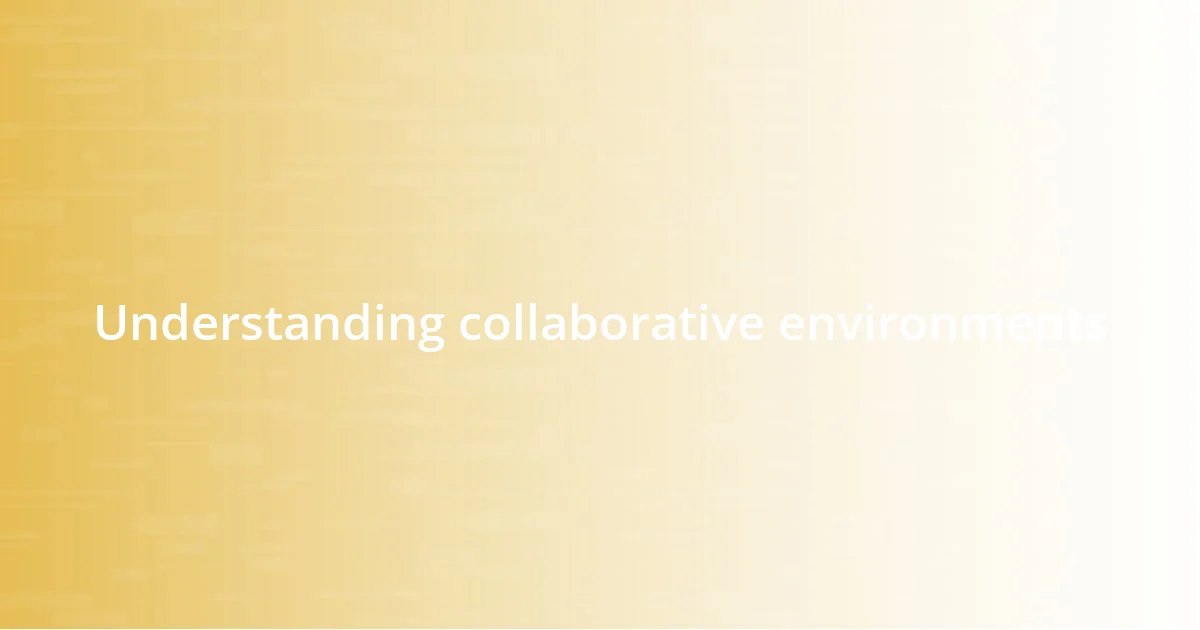
Understanding collaborative environments
Collaborative environments are fascinating spaces where diverse minds come together to achieve common goals. I remember a project I was part of where each team member brought unique strengths to the table, sparking creativity and innovation. Isn’t it incredible how different perspectives can transform a mundane task into something remarkable?
Engaging with others in these settings isn’t always smooth sailing, though. I’ve had my share of conflicts, and I learned that misunderstandings often arise when communication falters. Have you ever felt a project stall because team members weren’t on the same page? It’s in these moments that embracing open dialogue becomes essential for success.
What truly impacts a collaborative environment is the culture of trust and respect among members. I’ve witnessed teams thrive when individuals openly share ideas and embrace feedback. It begs the question: how can we create an atmosphere where everyone feels valued? From my experience, fostering this culture is pivotal to unlocking each person’s potential, leading to better outcomes and stronger relationships.
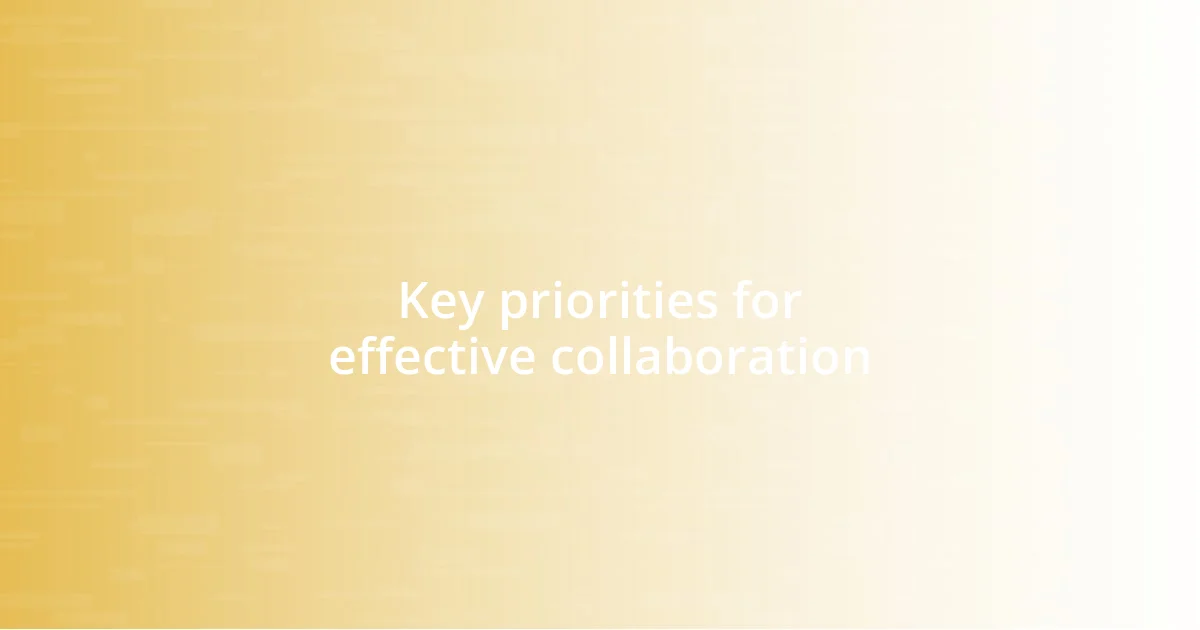
Key priorities for effective collaboration
When working in collaborative environments, I prioritize clear communication above all else. I’ve experienced a project derail simply because someone misinterpreted an email. From that moment on, I made it a point to utilize tools like video calls and group chats to ensure that everyone was on the same wavelength, leading to greater clarity and understanding.
Another priority I hold dear is diversity and inclusion within the team. During a brainstorming session for a product launch, I noticed how diverse perspectives fueled innovative ideas. I felt a palpable energy in the room as someone from a different background offered insights that transformed our initial concepts. That experience solidified my belief that including varied voices not only enriches discussions but also leads to more effective solutions.
Respecting everyone’s time and contributions is equally important. I’ve been in meetings where one person dominated the conversation, which left others feeling undervalued. Over time, I learned to implement structured agendas and time limits to create space for everyone’s input. This balance encourages more engagement, making team members feel appreciated and allowing for a more vibrant collaborative atmosphere.
| Key Priority | Description |
|---|---|
| Clear Communication | Maintaining open dialogue to ensure everyone is aligned. |
| Diversity and Inclusion | Valuing different perspectives to foster creativity and innovation. |
| Respect for Time | Creating an environment where everyone’s contributions are valued. |
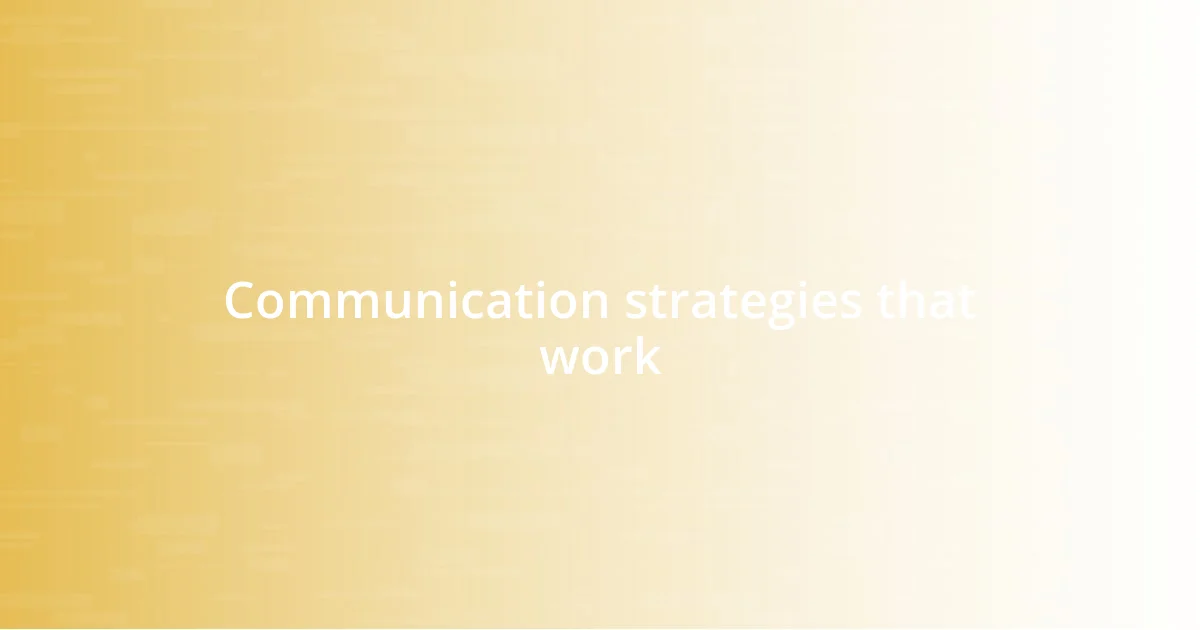
Communication strategies that work
When it comes to communication strategies, I’ve found that active listening can truly transform discussions. I recall a time during a team meeting where one person’s perspective shifted everything. Instead of waiting for a turn to speak, I focused on fully understanding their viewpoint, which not only cleared up a misunderstanding but also sparked a breakthrough idea. This experience taught me the importance of genuinely hearing others; it cultivates a safe space for dialogue and encourages more meaningful collaboration.
A few strategies that have consistently worked for me in fostering effective communication include:
- Regular Check-Ins: Scheduling brief updates can keep everyone aligned and engaged.
- Feedback Loops: Creating opportunities for ongoing feedback ensures that team members feel heard and valued.
- Non-Verbal Cues: Paying attention to body language can provide insight into how team members are feeling, fostering empathy and understanding.
I believe that these strategies not only enhance clarity but also empower individuals to share their thoughts openly, building a more cohesive team.
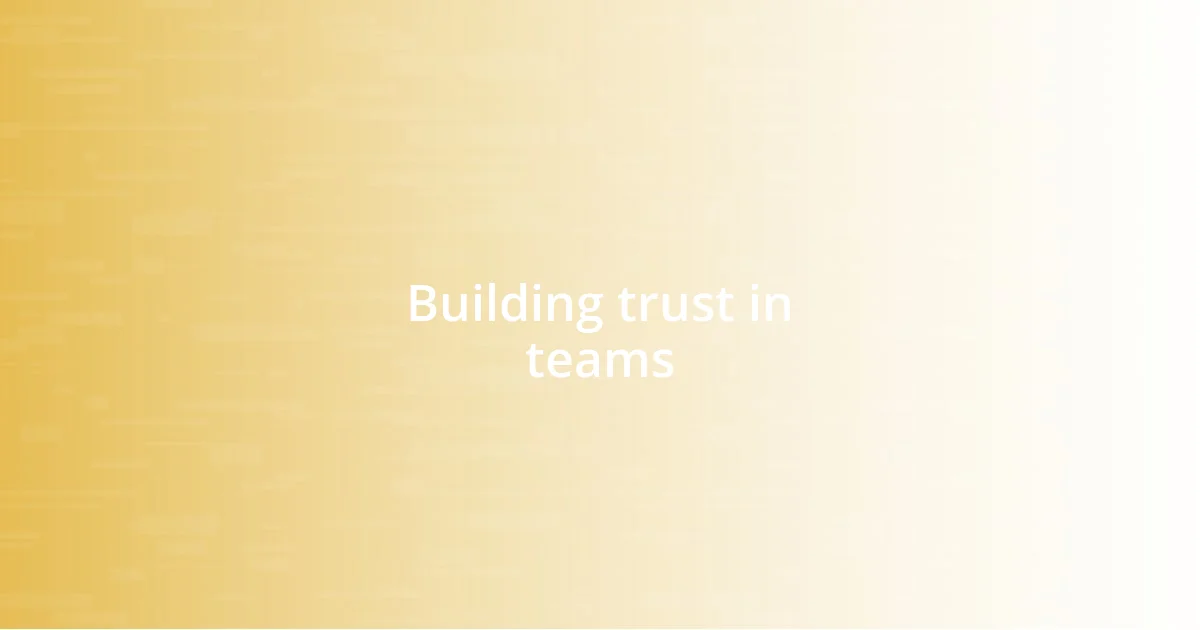
Building trust in teams
Building trust in a team is essential and starts with vulnerability. I remember the first time I shared my own mistakes during a project review. Admitting I had overlooked an important detail not only lightened the mood but also encouraged others to be open about their challenges. This shared honesty created a sense of safety, allowing us to collaborate without the fear of judgment. Have you ever considered how vulnerability can strengthen team bonds?
In nurturing trust, I find that consistency is vital. When I consistently follow through on my commitments, it reassures my teammates that they can depend on me. There was a particular team project where I always met my deadlines and provided prompt updates, which reinforced a reliable work ethic. This built a solid foundation of trust, motivating others to do the same. It made me realize that trust isn’t just built through words but through actions.
Additionally, fostering connections beyond work tasks helps deepen trust. I’ve seen how simple team-building activities, like casual lunch gatherings, provide space for personal stories and shared laughter. I can still recall a team outing where we engaged in light-hearted activities; it was a memorable moment that highlighted our shared humanity. Those elements of connection often translate into a more trusting and cohesive work environment. Don’t you think it’s important to establish those interpersonal bonds as well?
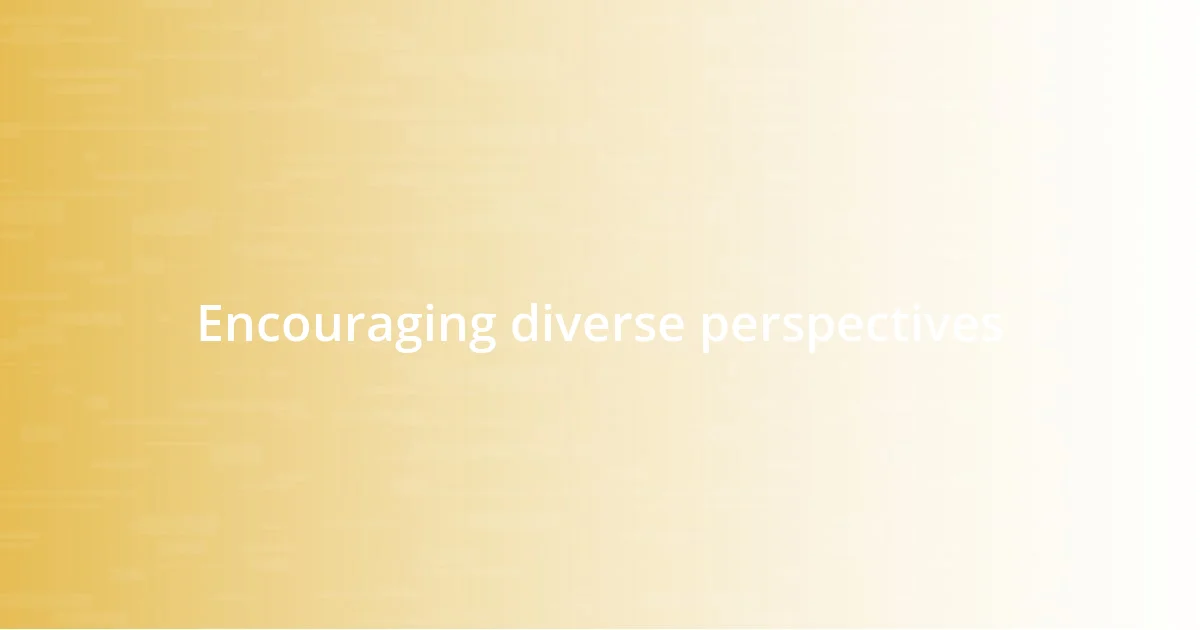
Encouraging diverse perspectives
Encouraging diverse perspectives is one of the cornerstones of effective collaboration. During a brainstorming session a while back, I encouraged my team to share their thoughts, regardless of how unconventional they might seem. One team member brought in an idea inspired by a completely different industry. At first, it felt irrelevant to our project, but as we discussed it, we found a unique angle that ultimately led to a breakthrough. This experience solidified my belief that every perspective has value; it just needs space to breathe.
To actively promote diverse viewpoints, I’ve found it helpful to create ground rules that emphasize respect and openness. For instance, in one of my teams, I suggested we implement a “no bad ideas” rule during our planning phases. This shift empowered everyone to voice their opinions without the fear of dismissal. I could see the excitement in the room as team members who typically held back started chiming in with their thoughts. It struck me then how liberating it is to foster an environment where creativity is loosened from the grips of judgment.
Reflecting on these experiences, I often ask myself: how can we do better? In one particularly diverse project, I noticed how leaders who actively sought out contributions from quieter team members revealed hidden gems of insight that we might otherwise have overlooked. It made me realize that encouraging diverse perspectives isn’t solely about allowing everyone to speak; it’s about valuing those voices and weaving them into the fabric of our decision-making process. What do you think? Isn’t it incredible how a simple shift in approach can reveal new dimensions to our collaborative efforts?
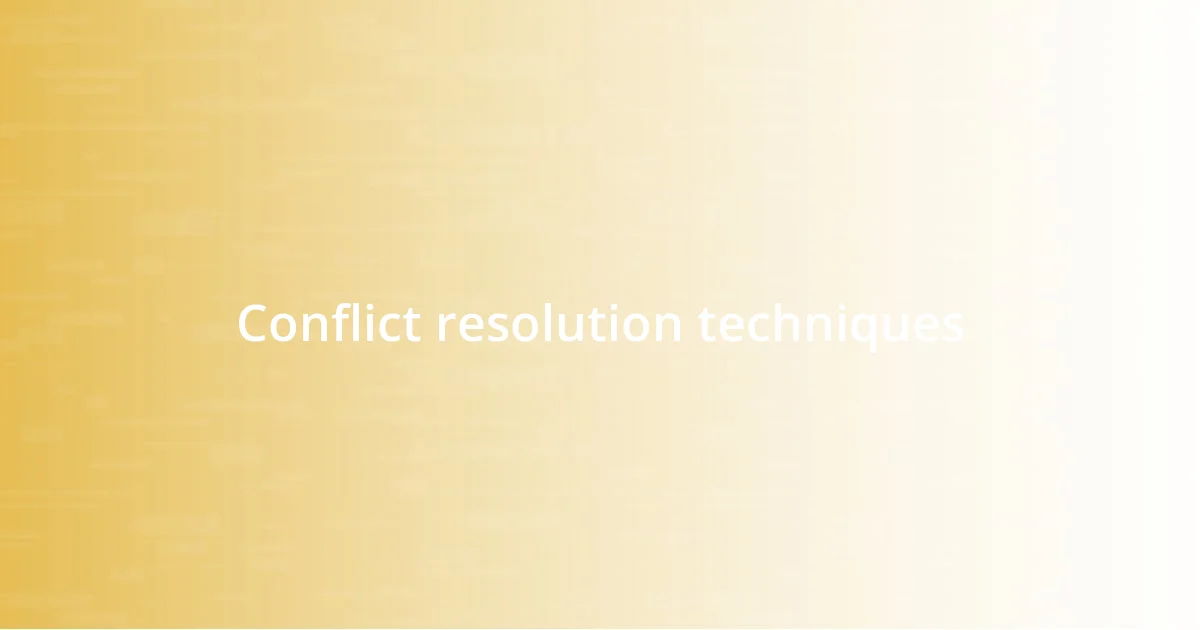
Conflict resolution techniques
Conflict is an inevitable part of collaborative work, but I’ve learned that the way we approach it can change everything. In a project, I once faced a disagreement over a strategic direction. Instead of letting emotions dominate the conversation, I suggested we use a structured approach to express our viewpoints, allowing each person a set time to share their perspective. This helped us to articulate our concerns without the need for defensiveness. Have you ever noticed how just a little structure can diffuse tension?
I prioritize active listening when resolving conflicts. I vividly recall a time when two teammates were at odds over tasks. I facilitated a one-on-one conversation between them, urging both to listen without interruption. As they began to communicate openly, they discovered common ground that transformed their rivalry into a collaborative plan. It’s amazing how simply feeling heard can lead to productive dialogue and solutions that satisfy everyone.
Another technique I rely on is focusing on the problem, not the people involved. During a particularly heated discussion about project deliverables, I encouraged the team to look at the issue without assigning blame. This reframing helped shift the energy from personal attacks to problem-solving. I remember the palpable relief that washed over the room as we collectively identified the root cause. Isn’t it refreshing when the focus is on collaboration rather than contention?
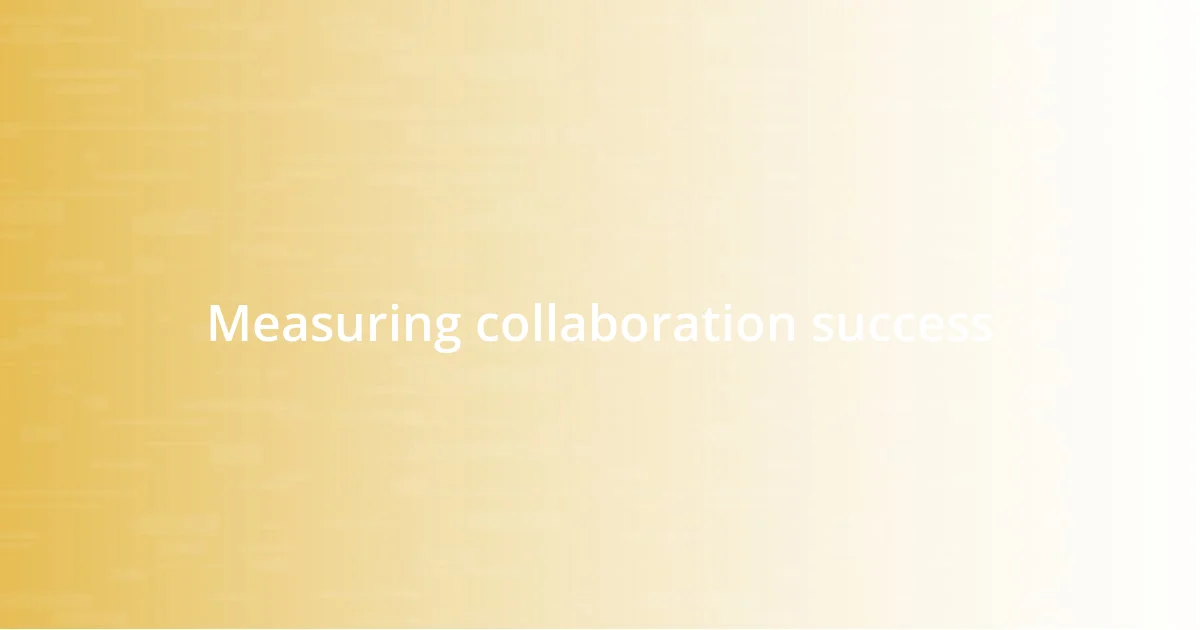
Measuring collaboration success
To gauge collaboration success, I often rely on both qualitative and quantitative measures. In my experience, one helpful approach is gathering anonymous feedback post-project. This allows team members to express their thoughts freely about the collaboration process. Last year, after a significant project, I initiated a retrospective meeting where we could openly discuss what worked well and what didn’t. The insights shared were eye-opening, revealing not just individual contributions but also the synergy of our teamwork.
I also pay attention to the collective outcomes of our collaboration. Were we able to meet deadlines? Did we achieve the intended results? I’ve found that tangible metrics, like on-time deliverables and quality of the final product, can indicate the effectiveness of our collaborative efforts. In one memorable project, for instance, we exceeded our goals by 20%. This success not only validated our collaborative process but also boosted team morale dramatically. It made me wonder, how often do teams celebrate these wins together?
Another fascinating aspect I consider is the dynamics of interaction within the team. I recall a particularly rewarding experience when I observed team members eagerly supporting one another. Those moments of help and encouragement were more telling of success to me than any numerical metric. Seeing how collaboration fostered a culture of trust and openness left me reflecting on how vital such an environment is for future projects. Isn’t it interesting how the emotional landscape of a team can often reveal more than hard data ever could?











